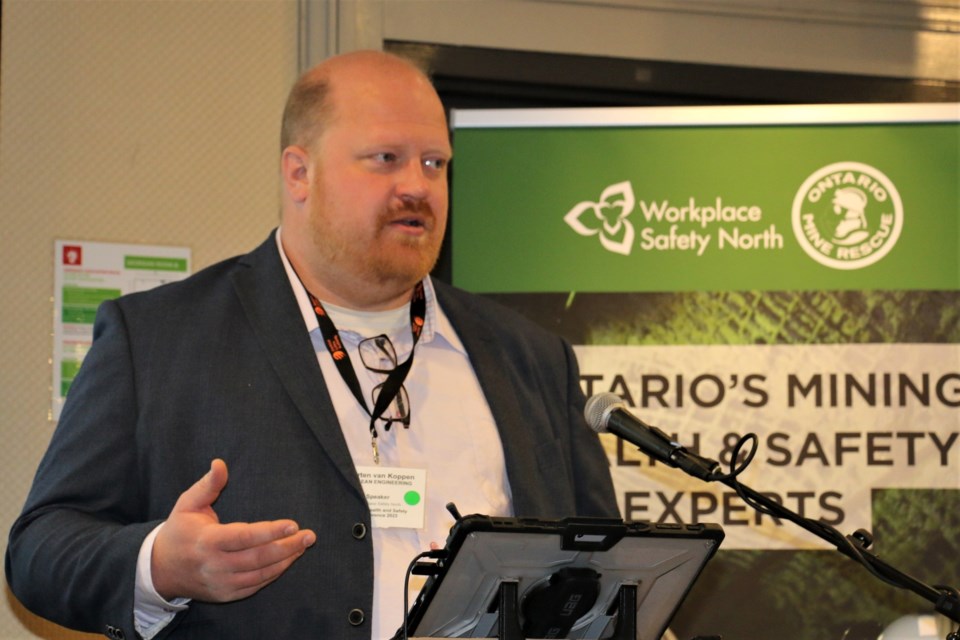A mining-equipment company with a test mine in Sudbury is developing a new type of rock-bolting technology designed to make the job safer and more efficient.
Maarten van Koppen, P.Eng. and vice president of product management with MacLean Engineering, was speaking at the Workplace Safety North mining health and safety conference in Sudbury, last week when he said more can be done to make rock bolting and ground control safer for the bolting machine operator and anyone else working nearby.
One of the reasons for the annual conference is to find ways and procedures to do mining jobs more safely.
Ground control is the process of ensuring the stability of underground excavations and preventing falls of rock.
He told the audience that MacLean is now working toward a new generation of bolting machines that will address two major technical hurdles; autonomous machines that can operate themselves and robotic machines that can work with a human partner.
While autonomous rock bolting is still in the very early testing stages, the robotic machine is at the prototype stage.
MacLean has a test mine in Lively consisting of a ramp and several hundred metres of drift, where van Koppen said mining machines can be tested in real life conditions. He said the new robotic rock bolter is being tested there.
His talk was backed up by a video presentation showing a regular rock bolting truck equipped with a large robotic arm, capable of drilling a hole, withdrawing the drill steel, accessing a rock bolt and inserting the bolt into the rockface.
"We've been working over the last couple of years to really try to perfect this or, or work our way through it," said van Koppen.
"Essentially the concept is that we replace the operator with a robotic arm and the operator is now in a cab."
He said a key consideration is to remove the miner from the active area of drilling and bolting where the miner might inadvertently be exposed to unsupported ground, which can put a miner in danger either from the roof of the drift (tunnel) or the walls.
This happens with miners working with jumbo-drill bolters or boom-based bolters, said van Koppen. This takes the miner out of the safety zone and puts the miner closer to where a fall of ground might occur.
"And that's especially true when you look at upper end development, where you have gravity helping a hand as well. Then there's also (rock) bursting scenarios. So in mines with a lot of seismicity, again a lot of the bursts come from lower walls, because traditionally they have not been as well supported," van Koppen said.
In recent years, MacLean has sold hundreds of bolting machines to mines in Ontario and Quebec. MacLean is currently working the bugs out of the prototype machine, which was a typical MacLean 975 model bolter with the robotic arm installed, said van Koppen.
"So we just put it on a regular bolter to try to make it work, trying to learn more about robots, trying to learn more about, you know, what kind of grippers do we need for the bolts, etcetera. How can we work out how the robot needs to do bit changes, and things like that? So we've been working with this unit for quite a while," he said.
In the meantime, van Koppen said testing continues on an autonomous rock bolter machine. He said MacLean has recently done early testing on having an autonomous platform machine proceed down a drift and recognize obstacles that are put in the way so the machine can either stop or drive around them. Other than that, he said there is still much development and testing to be done.
Len Gillis covers mining and health care for Sudbury.com.
